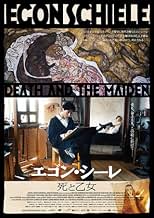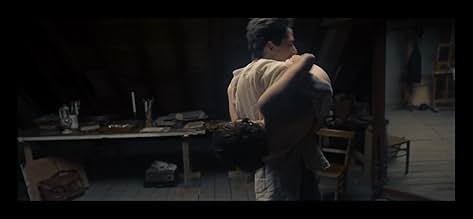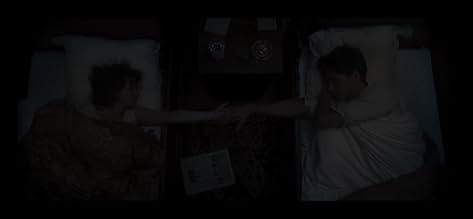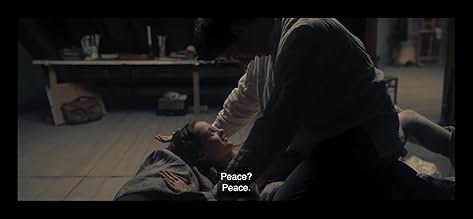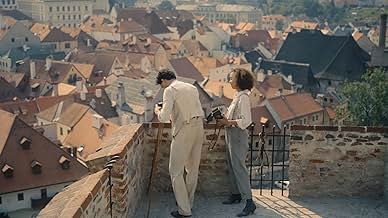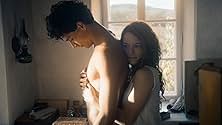NOTE IMDb
6,5/10
1,6 k
MA NOTE
Ajouter une intrigue dans votre langueVienna, early 20th century: the young Egon Schiele is one of the most discussed artists of his time with his original, erotically charged works.Vienna, early 20th century: the young Egon Schiele is one of the most discussed artists of his time with his original, erotically charged works.Vienna, early 20th century: the young Egon Schiele is one of the most discussed artists of his time with his original, erotically charged works.
- Récompenses
- 7 victoires et 10 nominations au total
Larissa Breidbach
- Moa Mandu
- (as Larissa Aimée Breidbach)
- …
Histoire
Le saviez-vous
- AnecdotesThe trailer for the movie was blocked on Facebook for the reason of nudity.
- GaffesDuring several closeups it can be seen that Noah Saavedra (Egon) and Valerie Pachner (Wally) are wearing contact lenses. The distinctive transparent rings around the irises are clearly showing.
- Citations
Egon Schiele: You can't buy art. Art is invaluable.
- ConnexionsReferences Der Hirt von Maria Schnee (1920)
Commentaire à la une
A biopic of Austrian painter Egon Schiele (1890-1918), what instantaneously catches our eyes is the pulchritude of its leading actor Noah Saavedra, whose Adonis appearance becomes almost too distracting for the movie's own good, but it shouldn't take the credit away from Saavedra's immersed embodiment of the ill-reputed expressionist, who leaves a vast legacy to this world after his own ephemeral and turbulent life.
After opening the picture with a frenzied sequence of some sort of familial turmoil and envisaging a moribund Schiele smitten with the Spanish flu pandemic in his last days, director Dieter Berner discerningly unspools Schiele's final decade chronologically through the relations with his models: from his underage sister Gerti (Riegner), with whom he forms an intimate bond teetering on the brink of incest, to a tableau-vivant performer Moa (Breidbach), then his bona-fide muse Wally Neuzil (Pachner), whom he first encounters in the studio of his mentor Klimt (Obonya), until his ill- matched bourgeois wife Edith Harms (Marie Jung), only to coyly divulge Schiele's feckless penchant towards his conquests, chiefly for the sake of artistic inspiration and utilitarian purpose, art first, women second, seems a fitting watchword for him.
It is Egon and Wally's romantic liaison highlights the narrative, and a sylph-like Valerie Pachner gives her best in projecting Wally's emotional gamut out of their artist-and-muse equilibrium, in particular during Schiele's scandalous trial of pornography and pedophilia (another taboo topic subjected to an ambiguous brush), her conflicted reaction stays with audience longer than the artist's outrage of witnessing one of his paintings being torched. But Berner ultimately sweetens the pill of their fallout, which prompts the name-change of the film's titular painting, out of the reverence to Egon's posthumous fame.
As picturesque as a painter's biopic could ever be, Berner's diligent but anodyne work doesn't pack a substantial punch which would be in concordance with his subject's singularities, especially that unique characteristic stemming from his licentious, tempestuous persona, still eludes us after him shuffling off this mortal coil.
After opening the picture with a frenzied sequence of some sort of familial turmoil and envisaging a moribund Schiele smitten with the Spanish flu pandemic in his last days, director Dieter Berner discerningly unspools Schiele's final decade chronologically through the relations with his models: from his underage sister Gerti (Riegner), with whom he forms an intimate bond teetering on the brink of incest, to a tableau-vivant performer Moa (Breidbach), then his bona-fide muse Wally Neuzil (Pachner), whom he first encounters in the studio of his mentor Klimt (Obonya), until his ill- matched bourgeois wife Edith Harms (Marie Jung), only to coyly divulge Schiele's feckless penchant towards his conquests, chiefly for the sake of artistic inspiration and utilitarian purpose, art first, women second, seems a fitting watchword for him.
It is Egon and Wally's romantic liaison highlights the narrative, and a sylph-like Valerie Pachner gives her best in projecting Wally's emotional gamut out of their artist-and-muse equilibrium, in particular during Schiele's scandalous trial of pornography and pedophilia (another taboo topic subjected to an ambiguous brush), her conflicted reaction stays with audience longer than the artist's outrage of witnessing one of his paintings being torched. But Berner ultimately sweetens the pill of their fallout, which prompts the name-change of the film's titular painting, out of the reverence to Egon's posthumous fame.
As picturesque as a painter's biopic could ever be, Berner's diligent but anodyne work doesn't pack a substantial punch which would be in concordance with his subject's singularities, especially that unique characteristic stemming from his licentious, tempestuous persona, still eludes us after him shuffling off this mortal coil.
- lasttimeisaw
- 21 nov. 2017
- Permalien
Meilleurs choix
Connectez-vous pour évaluer et suivre la liste de favoris afin de recevoir des recommandations personnalisées
- How long is Egon Schiele: Death and the Maiden?Alimenté par Alexa
Détails
- Date de sortie
- Pays d’origine
- Sites officiels
- Langue
- Aussi connu sous le nom de
- Egon Schiele: Death and the Maiden
- Lieux de tournage
- 101 Hietzinger Hauptstrasse, Vienne, Autriche(Schiele's Atelier exterior)
- Sociétés de production
- Voir plus de crédits d'entreprise sur IMDbPro
Box-office
- Budget
- 4 700 000 € (estimé)
- Montant brut mondial
- 598 929 $US
- Durée1 heure 50 minutes
- Couleur
- Rapport de forme
- 2.35 : 1
Contribuer à cette page
Suggérer une modification ou ajouter du contenu manquant

Lacune principale
By what name was Egon Schiele (2016) officially released in Canada in English?
Répondre

